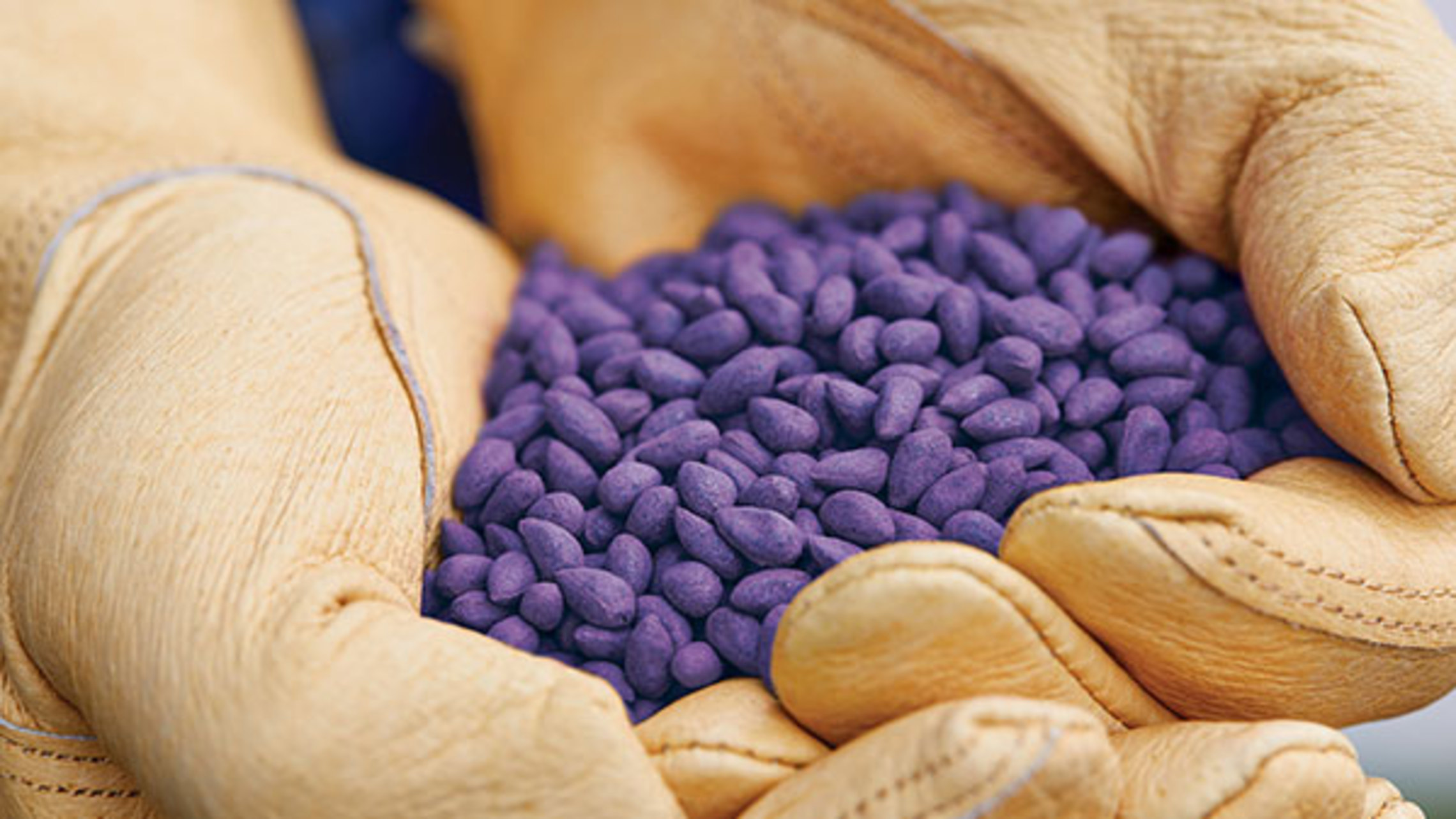The dust-off concern

Decreasing dust-off helps to reduce health risks, improve the environment and increase yield potential
With the increased use of seed treatments, concerns regarding dust-off has risen to the forefront for the agriculture industry. Dust-off, or free-floating particles and abrasion particles that fall off chemically treated seeds, not only poses a potential health risk to seed treaters and growers, but also threatens aspects of the environment, most notably pollinators and other beneficial insects. Additionally, any active ingredient that does not remain on the seed is a loss in yield potential.
So what can the agriculture industry do to reduce dust-off and limit health risks, environmental risks and yield loss?
Test the quality of the seed treatment
Dust-off testing measures the amount of seed treatment that doesn’t stick to the seed. Treated seeds are put into a device called the Heubach Dustmeter, which mimics the activity that would occur while handling or planting seeds. The meter measures the active ingredient that flakes off or results in dust. Overall, the seed treatment should have a high resistance to abrasion and minimal dust loss.
“A grower has to retain more of the active ingredient on the seed because he’s ultimately paid for it,” said Justin Clark, BASF Technical Marketing Manager. “The Heubach Dustmeter allows us to test for seed treatment quality, so the grower then gets the true benefit of that active ingredient, while reducing potential off-target movement.”
Advancing new seed treatment products
Creating new products helps combat dust-off through innovations in seed coatings, polymers and application processes. These new technologies are a huge part of providing growers with a product that could help improve potential yield, and, in the process, prevent environmental risks.
“We use the dust meter to gauge the quality of coatings BASF generates,” said Clark. “Now, with major row crops we use seed film coatings, which encase active ingredients within a thin film that binds the materials to the seed, improving handling and reducing dust-off for growers.”
As research leads to new seed technologies, dust-off will continue to decrease. However, these technologies are not the only way to improve upon this issue.
“I believe we have moved the needle of dust-off awareness over from where it was even 10 years ago by making everyone more aware of what’s going on for the multiple stakeholders,” said Clark. “Whether that’s the farmer on the ground, the seed dealers or the product manufacturers, and also bringing the equipment manufacturers in to develop different alterations.”
Working together
To further increase dust-off awareness and develop recommendations for the industry, BASF has teamed up with research organizations, such as the Pollinator Partnership’s Corn Dust Research Consortium. The Pollinator Partnership has spent years studying different dust-off components. To get the results needed, the organization gathered stakeholders from beekeeping, agriculture, manufacturing, research and regulatory agencies to facilitate research on reducing long-term damage to honeybees as a result of dust-off. As a result, they announced recommendations based on their targeted research designed to protect honeybees during corn planting.
“Working together as an industry is important,” said Clark. “BASF has been at the forefront of this dust-off concern by continuously developing new products for all growers.”
As the industry develops new seed treatment technologies and recommendations, growers may eventually have a product that reaches zero dust-off, a product that would benefit both the grower and the environment. To learn more about BASF’s seed solutions and the new technologies the company is developing, please visit agriculture.basf.com.
About BASF’s Crop Protection division
With a rapidly growing population, the world is increasingly dependent on our ability to develop and maintain sustainable agriculture and healthy environments. BASF’s Crop Protection division works with farmers, agricultural professionals, pest management experts and others to help make this possible. With their cooperation, BASF is able to sustain an active R&D pipeline, an innovative portfolio of products and services, and teams of experts in the lab and in the field to support customers in making their businesses succeed. In 2016, BASF’s Crop Protection division generated sales of €5.6 billion. For more information, please visit us at www.agriculture.basf.com or on any of our social media channels.
About BASF
BASF Corporation, headquartered in Florham Park, New Jersey, is the North American affiliate of BASF SE, Ludwigshafen, Germany. BASF has more than 18,200 employees in North America, and had sales of $17.9 billion in 2017. For more information about BASF’s North American operations, visit www.basf.com.
At BASF, we create chemistry for a sustainable future. We combine economic success with environmental protection and social responsibility. The more than 115,000 employees in the BASF Group work on contributing to the success of our customers in nearly all sectors and almost every country in the world. Our portfolio is organized into five segments: Chemicals, Performance Products, Functional Materials & Solutions, Agricultural Solutions and Oil & Gas. BASF generated sales of €64.5 billion in 2017. BASF shares are traded on the stock exchanges in Frankfurt (BAS), London (BFA) and Zurich (BAS). Further information at www.basf.com.
